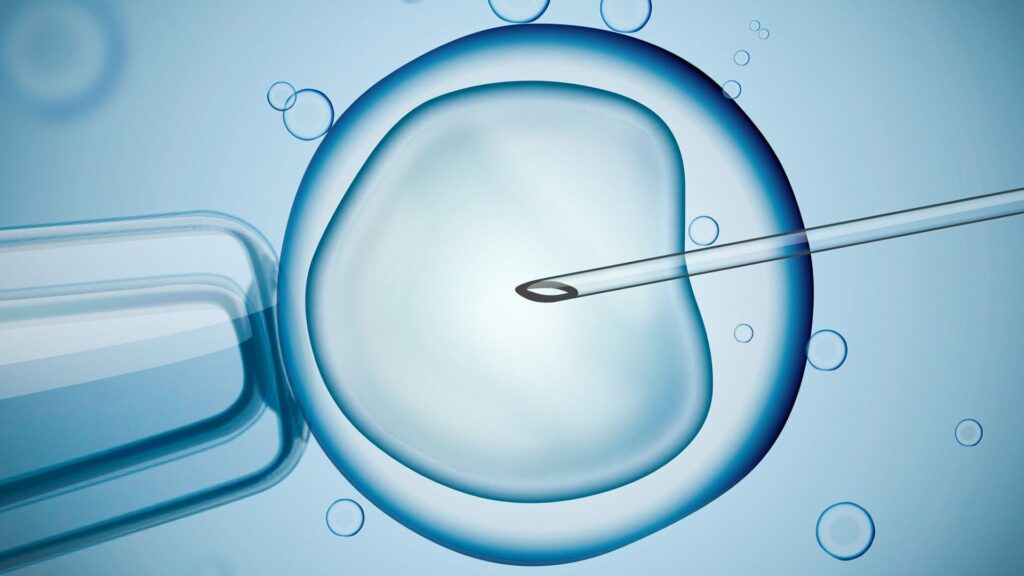In Vitro Fertilization
In vitro fertilization (IVF) With the advances in health technologies like IVF, now couples don’t have to try for years to get pregnant naturally. IVF addresses various issues of infertility and, with a high success rate, makes it possible to have a healthy baby. If you are unable to conceive and planning to undergo IVF, the doctors at the IVF center can help you to decide if it is the right choice for you.
What is InVitro Fertilization?
In Vitro Fertilization or IVF is a type of Assisted Reproductive Technology (ART). It uses a combination of medicines and surgical procedures that allows the sperm to fertilize an egg outside the body in a laboratory. This fertilized egg is called an embryo, which is transfered into a woman’s uterus.
In Vitro Fertilization Process
Before beginning with IVF procedure Reproductive Endocrinologist will advise you to undergo certain tests. These tests will asses your ovaries and uterine function and help your doctor to determine the best approach for IVF therapy. One cycle of IVF procedure generally takes 15 to 20 days from the starting date of your period. This is followed by 15 days of waiting to do a pregnancy test.
IVF involves five steps –
Step 1: Stimulation
Generally, a woman produces one egg during each menstrual cycle. IVF requires multiple eggs to increase the chances of successful fertilization. Fertility drugs will be prescribed to you to boost the production of eggs. During this process, you will be monitored with regular ultrasounds and blood tests to check your hormone levels.
Step 2: Egg Retrieval
Egg retrieval is a minor surgical procedure known as follicular aspiration. You will be given anesthesia so that you do not feel any pain during the process. With an ultrasound guide, a hollow needle is inserted into the vagina. Through suction, the needle will suck the eggs and fluid out of each follicle.
Step 3: Insemination and Fertilization
In this, the semen sample is collected from your male partner. A skilled technician will put the sperms with the best quality eggs in the laboratory. This process is called insemination. After storing eggs and sperms in a controlled chamber within a few hours, fertilization occurs. If the doctor feels there are fewer chances of fertilization, then sperm will be directly injected into the egg through intracytoplasmic sperm injection – ICSI.
Step 4: Embryo Culture
The doctor will monitor the fertilized egg to make sure it is growing properly. A healthy embryo will be dividing actively within five days. If there is any chance of passing a genetic defect, an embryo can be tested for the genetic disorder at this stage.
Step 5: Embryo Transfer
Typically three to five days after fertilization, the embryo is placed into a woman’s womb. A thin tube (catheter) is used to insert an embryo into the vagina and into the womb. When embryo implants in the lining of the uterus and grow, then pregnancy occurs. Sometimes more than one embryo is placed in a woman’s womb, which may lead to twins or triplets. How many embryos need to be transferred is a complex decision and it depends on a woman’s age and many other factors.
In Vitro Fertilization Pros and Cons
IVF is the most successful option for many couples facing infertility. The most significant advantages of IVF are a successful pregnancy and a healthy baby.
The benefits of In Vitro Fertilization are:
• The best option for specific infertility causes. The couples don’t have to waste their time in other infertility treatments when the causes include blocked fallopian tubes, maternal age, reduced ovarian reserve, and severe male infertility issues. In these cases, IVF is the best treatment option.
• Increased chances of having a healthy baby. When there is a chance of passing any genetic disorder, preimplantation genetic screening in IVF makes it possible to choose a healthy embryo.
• IVF can be used successfully in any individual. It can be used in surrogate or gestational carriers, women who are facing frequent miscarriages and also in same-sex couples who want to enter parenthood.
IVF is a medical procedure that involves few risks and complications:
• Multiple pregnancies – this may result when more than one embryo is inserted, which increases the risk of low birth weight or premature birth.
• Miscarriages or loss of a pregnancy – like normal pregnancy IVF pregnancy also has a risk of miscarriages.
• Ectopic pregnancy – when egg implants outside the uterus it is called an ectopic pregnancy. 2% to 5% of women with IVF have an ectopic pregnancy, where pregnancy cannot be continued.
• Ovarian hyperstimulation syndrome – Human chorionic gonadotropin (HCG) is the injectable fertility drug used to induce ovulation. During this process, ovaries may become swollen and painful, which is called ovarian hyperstimulation syndrome. Symptoms include mild abdominal pain, nausea, vomiting, bloating, and diarrhea. These symptoms will disappear in a few weeks.
• Stress – IVF can be physically, emotionally, and financially draining, which may cause stress. Emotional support from the partner and family can help you to go through the ups and downs of fertility treatment.
In Vitro Fertilization Success Rate
The success rate of IVF depends on many factors, such as maternal age, cause of infertility, medical history, and lifestyle factors. Also, pregnancy rates are not similar to live birth rates. According to the Society of Assisted Reproductive Technology (SART), success rates are reported according to the woman’s age.
• 41 to 43 % for women under age 35
• 30 to 36 % for women age 35 to 37
• 23 to 27 % for women age 38 to 40
• 13 to 18 % for women age 40 and above.
How to choose an Infertility Clinic
You might have queries regarding the fertility programs, centers, and the cost. Take time to research the center you are considering to find the best fertility clinic for you.
Investigate about the clinic by
• Visiting the clinic’s website.
• Speak to a representative over a phone.
• Ask recommendations from an infertility support group.
• Check for the clinic’s success rate.
• Book an appointment for a consultation.
How much it costs for an IVF treatment
The cost of IVF depends on many factors and is not always expensive. Depending on your age, infertility causes, types of treatment needed, and the protocol used, the IVF cost varies. The cost generally ranges from 90,000 to 1 lakh per IVF cycle.
Bottom Line
Deciding on undergoing an IVF procedure can be stressful. It is essential to understand thoroughly the IVF procedure, risks, and gains it involves. The best way to know your success rate is to arrange a consultation with an IVF consultant. Choose IVF to give yourself a chance to give birth to a healthy baby.


